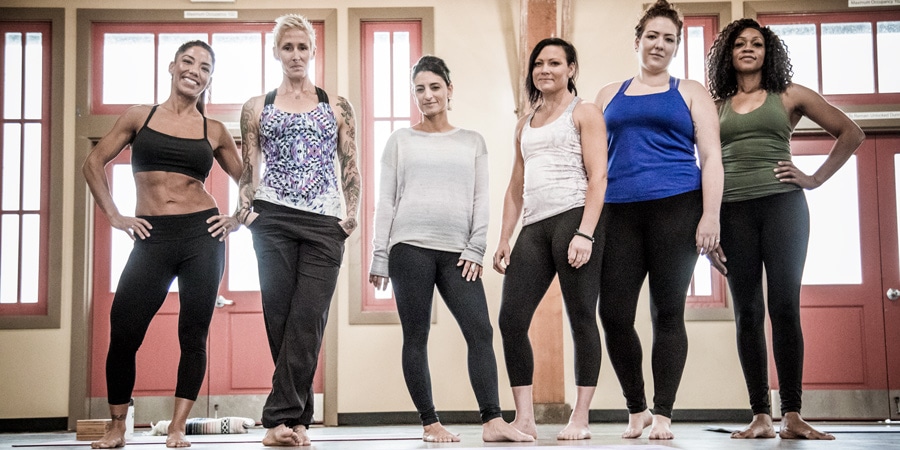Refining a downward dog or trying a new balance pose at the yoga studio is challenging enough on its own, but it's made even harder when you're fiddling with sagging, too tight or uncomfortable yoga clothes. That's why it's important to purchase clothes that are breathable, flexible and comfortable.
Your yoga clothing purchases will depend largely on personal preference, as well as the style of yoga you plan to practice. But at a high level, here's what to wear to yoga (see below for a more detailed discussion of these yoga basics):
- Breathable, flexible bottoms like yoga pants or shorts
- A breathable, narrow- or form-fitting top that won't hang over your head when you're upside down.
- For women, a sports bra or built-in shelf bra that offers enough support for the type of yoga you're practicing
- A comfortable, warm top layer for end-of-class savasana (corpse pose) or after class when you've cooled down
What to Look For in Yoga Clothing
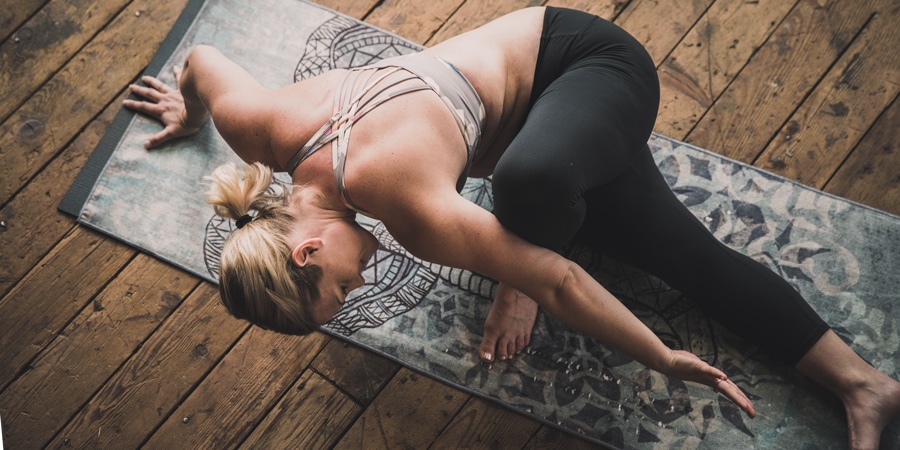
Many yoga clothes are made with polyester-nylon-spandex blends, and for good reason—these fabrics offer the right balance of comfort, breathability and flexibility:
- Comfort: There's nothing worse than practicing yoga in an uncomfortable piece of clothing. As you tune into your body, you don't want to focus on itchy seams and tags, saggy or too tight waistbands, or fabric that binds and chafes.
- Breathability: Depending on the type of yoga you practice, you may sweat a little or a lot. Particularly if you're sweating a lot, it's important to wear breathable and moisture-wicking materials to keep you cool and comfortable. Tank tops, shirts with cutouts and yoga pants with mesh pockets will all improve breathability and venting. Avoid cotton, which holds moisture, makes you feel hot and damp, then leaves you prone to chafing or getting chilled when class winds down.
- Flexibility: Yoga involves bending, stretching, binding, lunging, reaching and rolling. Your clothes need to be able to keep up with these movements, which means they'll probably be made with at least 15 percent spandex.
What to Wear to Yoga Class
Yoga clothes belong to a category often referred to as "athleisure," which means that people now wear yoga clothes as a matter of fashion, not just function. As such, you'll now find yoga gear with pockets, mesh cutouts, bright colors, wild patterns and more. While all of this is fun, if you're planning to wear your clothing to an actual yoga class, remember to pay attention to function: When you're trying items on, consider doing a few yoga poses (downward facing dog and high crescent lunge are great options) in the dressing room or at home to test out the garment's flexibility and comfort.
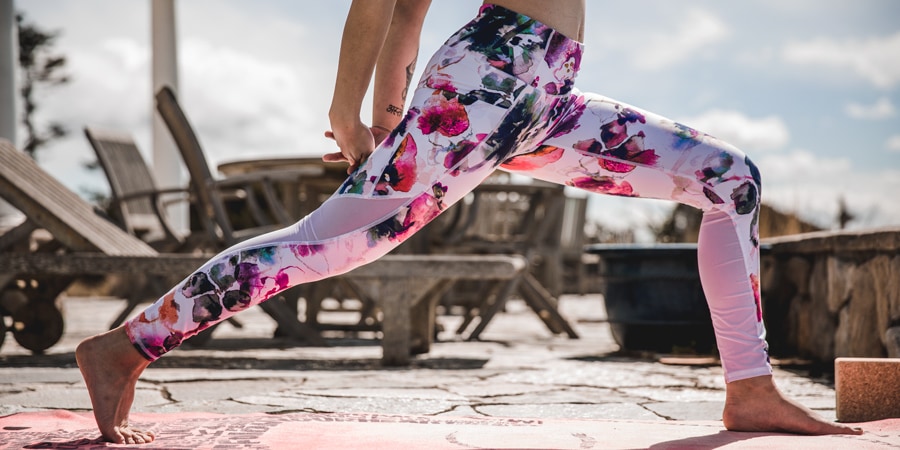
A typical yoga wardrobe includes:
Yoga leggings/pants: Yoga clothing brands offer multiple styles of yoga pants with varying lengths and fits. As with all yoga clothing, look for yoga pants or leggings (terms that are used somewhat interchangeably) that offer a good combination of breathability, flexibility and comfort. Nylon-polyester-spandex blend pants are a good bet, as they move with you through postures but also wick moisture.
If you're concerned about coverage when bending and stretching, high-waisted leggings or pants might be a good choice; they are typically less likely to slip during a fast practice or ride down too far during inverted poses like downward dog. Most leggings range from midcalf to full leg in length. Loose-fitted pants can be a nice option for slower yoga classes like restorative or yin; they are typically not recommended for power vinyasa classes, as they can impede mobility. If you do choose to wear loose-fitted pants for a challenging yoga class, look for options that cinch around the ankle.
Yoga shorts: Some brands make men's yoga shorts with built-in liners for comfort during a bendy, stretchy practice. Alternatively, you can find longer yoga shorts that reach to the knee, which can aid in coverage during inversions. Spandex yoga shorts, typically geared toward women, are a tricky business; they tend to ride up during practice and don't provide much coverage during complicated poses. However, some people find them to be the most comfortable option when there's lots of heat and sweat involved, as with hot yoga classes.
In general, avoid yoga bottoms that are too thin and see-through, saggy (a common occurrence in low-rise, too-tight pants) or made with cotton. If you build up some heat in your practice, remember that longer coverage on your legs can be a bonus for arm balancing postures, as the fabric can help keep your legs from slipping off your sweaty arms.
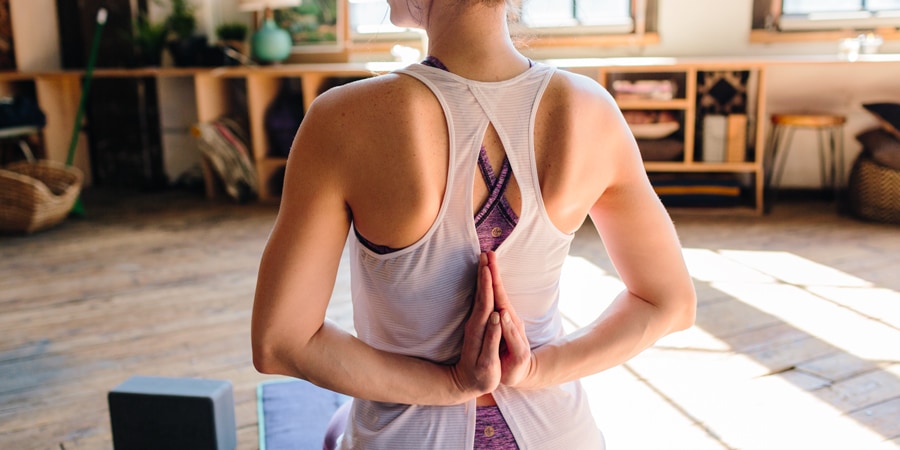
Yoga tops: No matter the style, most yogis prefer to wear form-fitting T-shirts or tank tops that fit snugly around the hips and waist. This narrow fit keeps the shirt from falling over your head during forward bending postures. Shirts made with breathable, moisture-wicking materials and soft seams are also a good idea for sweaty classes; avoid itchy tags and tops that chafe under your armpits. Many yoga tank tops have sports bras built in as well.
Give your yoga top a test run by bending forward to touch your toes in the dressing room: Does the shirt gap at the chest or fall over your head? If so, trade it in for a shirt with a tighter fit. As always, avoid cotton.
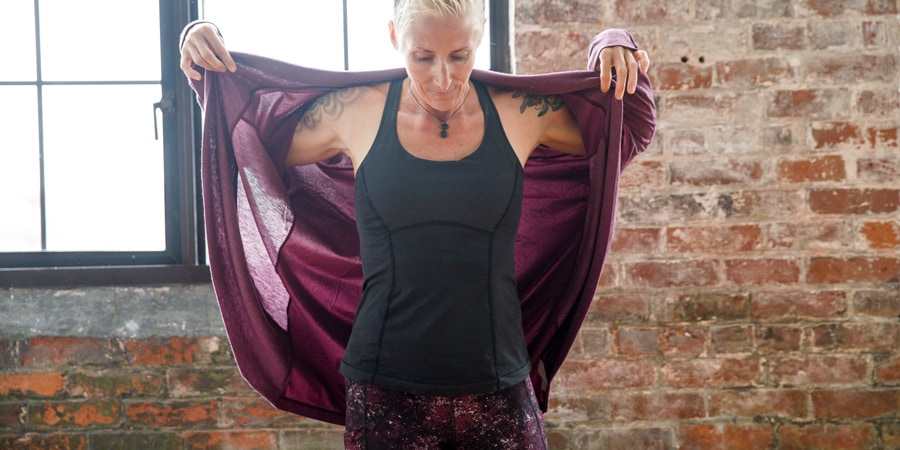
Yoga sweaters/jackets: If you plan to run errands after class, you might want a warm, comfortable yoga cover-up like a jacket, quarter-zip or sweatshirt. This can be especially helpful during the winter, after leaving a sweaty class: Extra layers can prevent the immediate chill you'll likely experience after leaving the warm room.
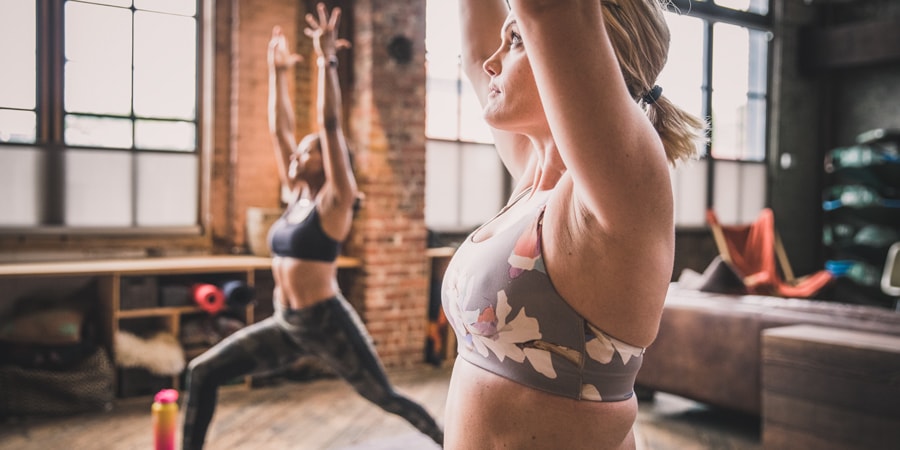
Sports bras: Your choice of sports bra will depend on your bra size and coverage needs. In general, high intensity classes like power vinyasa require more support, as you're likely to be twisting and inverting (going upside down). If you plan to attend a low intensity class like yin or restorative yoga, a lower level of support will work just fine. It's worth noting that many female yogis wear sports bras alone, without a tank top or T-shirt, in sweatier classes. Some yoga shirts and tanks come with bras already built in.
Yoga socks: Some people prefer to wear socks while practicing yoga, to keep their feet from slipping on the mat. Most yoga socks have plastic treads on the bottom to prevent sliding; you can also find yoga toe socks. If you'd rather not wear socks in class, consider buying a non-slip yoga mat or using a yoga towel on top of your existing mat.
Breathable underwear: Like any sport, yoga involves sweat and movement, so you'll want to wear base layers that breathe, wick moisture and don't bunch; avoid cotton. Buy underwear that doesn't chafe or move too much on your body as you move into deep stretches. Some people prefer to wear formfitting yoga pants without underwear.
How to Take Care of Your Yoga Clothing
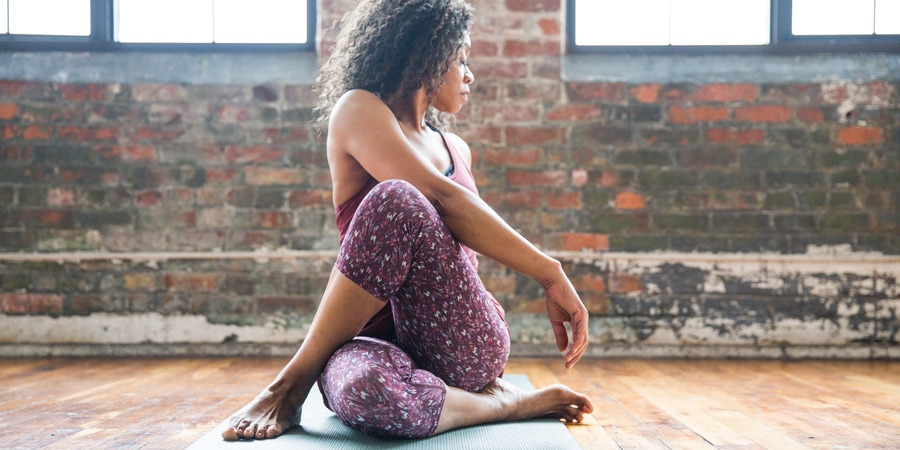
Most yoga apparel will come with washing instructions, but in general it's a good practice to turn your gear inside out and wash it in cold water, then tumble dry on low heat for a short cycle. If you have time, hang your gear to dry instead of running it through a dryer; a short cycle or hang dry prolongs the life of your garments. If you have bright-colored clothing, wash it separately the first few times just in case the colors bleed. Also, wash your yoga gear separately from cotton materials like towels, as the cotton fibers tend to cling to yoga clothing.
